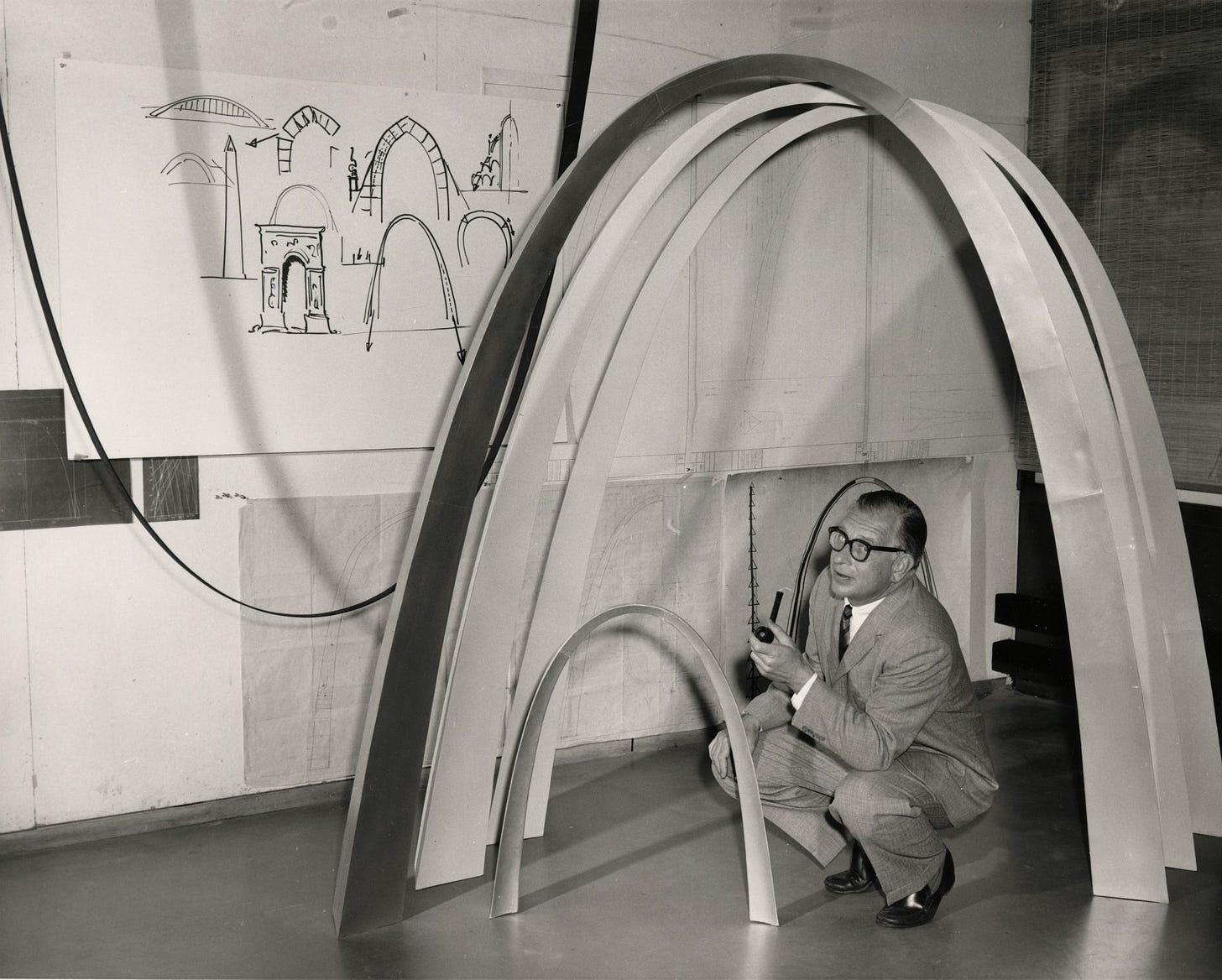Building the Gateway Arch in Saint Louis
THE COMPLEX ARCHITECTURE OF A SIMPLE FORM
Eero Saarinen drew upon simple monumental forms and the Arch of Constantine as he created the elegant Gateway Arch.
The Gateway Arch
[click to read]
The Gateway Arch majestically dominates the skyline of St. Louis, Missouri, and has come to symbolize the great city in the heartland of America. Reflecting St. Louis’s role in the nation’s westward expansion, the monument was constructed to memorialize the few hearty souls that set out to explore a new frontier. Thomas Jefferson sent his close confidantes Meriwether Lewis and William Clark on an epic excursion from the cultivated hills of Virginia to the country’s newly purchased and unchartered Louisiana territory. In the early 19th century, the shores of the Mississippi represented no less than the beginnings of a journey to“the ends of the earth.” (read more)
A Father, A Son, and a Case of Mistaken Identity
The year was 1922 and twelve year old Eero Saarinen won first place in a matchstick design contest. This event may have portended his career as an award winning architect. His father was Eliel Saarinen, a great architect. His mother, Loja Saarinen, was a sculptor, textile artist, photographer, and architectural model maker. You might say it was in his blood. Eero was taught that anything should be designed in its “next largest context - a chair in a room, a room in a house, a house in an environment, environment in a city plan.”
The family came to the United States from Finland just one year after Eero won the matchstick contest. Eero would eventually work for his father’s firm. Both father and son produced award winning designs – but now, fast forward to 1947 and the announcement of a competition to design a memorial to Thomas Jefferson’s vision for westward expansion. Both father and son developed concepts for this memorial independently of each other. Both submitted their respective designs.
An envelope arrived at the office stating that the firm had won the award for the memorial design. It was assumed that Eliel’s design had been selected… that is until a more specific communication made it clear that the winning design was that of Eero!
Eero had spent a good deal of time studying the site of the intended memorial. He says, “The major concern ...was to create a monument which would have lasting significance and would be a landmark of our time... Neither an obelisk nor a rectangular box nor a dome seemed right on this site or for this purpose. But here, at the edge of the Mississippi River, a great arch did seem right.” Saarinen envisioned a simple form, an inverted catenary curve that formed a graceful and slender arch of stainless steel – rising from a forest at river’s edge. It would become the iconic symbol of a great city.



